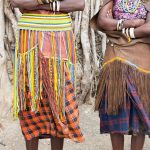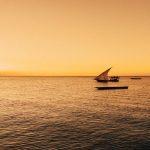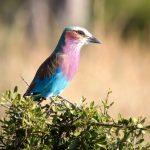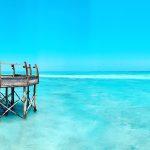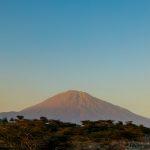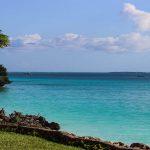Zanzibar Island, in Tanzania, is full of wonders. In this travel guide to Zanzibar, you’ll discover everything about the place, North to South, East to West. The best beaches, things to do and history.
Zanzibar West Coast
The West Coast to the north of Stone Town is the main area for industrial and fuel depots, military bases and government buildings. All of these are regarded as fairly serious business, and it is advisable not to take photographs or wander too close to any of these properties. But the coast road also wends its way past the ruins of historic palaces and some surprisingly good beaches, and also interesting caverns and caves. The best parts of the West Coast are all accessible on an easy and enjoyable day trip from Stone Town.
Zanzibar’s West Coast History
Sultan Said and his sons appreciated the joy of a fine country residence in easy reach of the town and chose to build palaces beside the sea on this Northern stretch of coast.
About 3km along the coast road you reach the ruins of Maruhubi Palace on the left-hand side. Sultan Barghash built the palace in 1882, to contain his extensive harem, reputed to have been 99 concubines, and one true wife. The sultan was not renowned for his kind heart, and many dramatic rumours concern this palace and grounds in which it is said he spilt the blood of any offending concubine or wife.
Stories tell how the autocratic Sultan would pick six concubines at a time, who would all risk death if he was not satisfied by their performance, and then these women would be replaced to keep the hareem at the statutory figure of ninety-nine. Concubines were also generously put at the disposal of any passing Arab guests but then would have to be killed so that they would not then bear the fruit of other Arab tribes.
It burned down in 1899, destroying the ornate wooden verandas and craftwork that once surrounded it, and leaving only the supporting stone pillars standing. The Peace Memorial Museum has a photograph of the palace when it was still intact at the end of the 19th century, and it is also published in Historical Zanzibar, Romance of the Ages, which shows a collection of photographs from the Zanzibar Archives.
Since its demise, the surviving marble has been stolen from the once fine baths, but both the sultan’s bath and all the women’s cubicles can still be explored. The remaining stone structure gives an eerie sense of what once was, and the extensive mango and coconut palmed groves and wide round water ponds give a sense of the environment in which the concubines and eunuchs once whiled away their days.
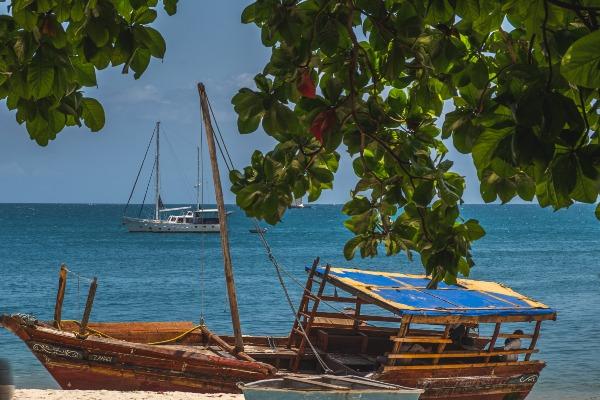
Historical Sights on Zanzibar’s West Coast
A little further north is the less well-preserved ruin of Mtoni Palace, built between 1828-34 for Sultan Said and said to be his favourite of all his residences. This first palace had two floors and several surrounding buildings, including a mosque, bathhouses and an elegant tower that served as an ornate veranda for private meetings and contemplation. Said’s daughter, Princess Salme grew up as the daughter of one of his concubines and describes her childhood at Mtoni in her Memoirs. She describes how the palace was always busy with innumerable staff, visitors, wives and concubines of all nationalities, and the courtyards were home to elegant tame birds such as peacocks, ostriches and flamingos.
Mtoni Palace is now in ruins, since a fire destroyed it in 1914, although for a while the mosque escaped the fire damage and remained in good condition. All this changed when it was used as a warehouse during World War One, and the remains were then cleared to make way for the oil depot. To visit the ruins take the narrow track to the left just before the oil depot.
Soon after Mtoni on the northwards journey brings you to the curiously named small village of Bububu, a quiet, slightly rural coastal region with an exciting number of stories that accompany its peculiar name.
Stories as to why Bububu is called Bububu are fun to relate to if only to repeat its monosyllabic name. Some say that the name came about as a result of two boys who lived in the area who were both mute. The name for someone with the affliction of no speech in Swahili is ‘Bubu’, and so the name came from the emphasis on both, so Bububu.
A slightly less ridiculous explanation relates to the Bububu railway that ran between 1904 and 1929, covering seven miles from the edge of the clove plantation to the Old Fort in Stone Town. The locomotive was a steam engine, and it is said the name is an onomatopoeic interpretation of the sound of the chuffing train…Bu-bu-bu-Bu-bu-bu .
However it seems that the name might have been in use even before the steam train, and some suggest the name comes instead from the freshwater spring that bubbles nearby, and from which the majority of the island receives their water supply.
From Bububu a small track leads west and onto a pretty and popular but very unspoilt beach. Here is Fuji Beach and a good place to rest halfway up the coast, or an easy day trip from Stone Town. A small local restaurant and bar serve inexpensive meals and drinks on the beach.
The road also branches east at Bububu and heads inland to the spice plantations, where the tours take place. About 4km along this road there are old Persian Baths at Kidichi and about 3km further inland some similar but less accessible ruins at Kizimbani. These were built for Sultan Said’s second wife, Binte Irich Mirza, known as Schesade, granddaughter of the Shah of Persia, supposedly at her request for something to remind her of home. Schesade or Sherazade was known to be a strong-willed woman who loved game hunting on horseback, and these baths were designed to be visited after just such feisty exercise.
The baths at Kidichi have an underground furnace to heat the floor and water, and the high-pointed chambers are beautifully decorated and detailed with delicate stucco work showing flowers, palms, dates and birds. Much of the bathhouse has recently been whitewashed in an attempt at restoration. These are now the only remnants of her palace that once stood here, as the rest was built in wood and did not withstand the ravages of time. The baths on Sultan Said’s estate at Kizimbani are very similar in design but without decoration.
A few kilometres further north is the turning to Mangwapani, and the site of two strange caverns near the beach. To the right-hand side of the track lies chilling evidence of the determination of slave traders to continue in their livelihood after it was made illegal by the British in a treaty with Sultan Barghash in 1845. Here is a deep subterranean stone chamber, its hipped roof just jutting above ground level and broken at the centre by a rough stone entrance. Illegally held slaves were led across a removable bridge and down into the darkness and then imprisoned by a heavy wooden door overhead. A path was carved through the coral rock between the chambers and the beach so that prisoners could be transported to the sea without being seen, but unfortunately, this has since been blocked by falling rock.
On the left-hand side of the track to Mangwapani there is a path to another cavern, but this is a natural limestone cave and contains a cool, dark pool of fresh spring water. Traditional stories tell how this spring was discovered by a young slave of a wealthy Arab named Hamed bin Salim El-Harthy. The boy was herding his master’s goats when one was lost, and its cries were seemingly coming from under a bush. The boy searched beneath the bush and discovered the cave, which has since provided good water to nearby villagers.
The cave is also thought to have spiritual powers, and, along with several natural caves around the island, it is used by some as a place to leave offerings to spirits that might dwell there and provide help in times of sickness or need.
Further north, on the road leading up towards Nungwi, another such spring is found in the northeast corner of the ruins of a coral rag house at Mvuleni. These ruins ostensibly date from the sixteenth century, although it is thought that there was a Shirazi settlement here before this time, and the remaining present structure was probably constructed by the Portuguese.
The house had simple pointed stone arches and the appearance of a fortified domestic dwelling, with thin gun slits evident in the gatehouse. Across the road at Fukuchani are the remains of a similar construction, although this was almost certainly built over a much older building dating from the 9th century.
The western coast road to the north comes to a natural end at Mkokotoni, before veering around to the Eastern peninsula past the interesting old ruins at Mvuleni and Fukuchani (see below) before reaching Nungwi. Mkokotoni looks out onto Tumbatu Island, an island with a history and a present reputation for its aloof and proud inhabitants who do not welcome visitors.

Royal History of Zanzibar’s West Coast
There is a long history of the grand royal family on Tumbatu Island, but their reign was ended by an untoward attack by piratical Arabs, who later moved south of Tumbatu and quietened down. The ‘Mwana Mwena’ of Tumbatu was traditionally considered Queen of all of northern Zanzibar, but she made a bit of a blunder when she gave the island to the Portuguese and then set off to Goa and became a Christian. She never regained her popularity, even when she came back and tried to smooth things over, and her son took on the rule.
The people of the island, known as WaTumbatu, speak their dialect of Swahili and are famous throughout East Africa for their skill in sailing and navigation. At Makutani, at the south-eastern end of the island, there are ruins of a substantial Shirazi settlement, with remains of a large mosque and houses, thought to have been founded in 1204, by Yusef bin Alawi. In the 13th century, an Arab geographer named Yakut travelled to Tumbatu and recorded that the inhabitants were Muslims who had withdrawn to Tumbatu following an attack on them elsewhere.
A local chronicler records that a leader of the royal family of Tumbatu, probably Yusef, ruled until the town at Makutani was attacked and destroyed by piratical Arabs and the importance of his reign diminished in the 15th century. But the people did not flee and started a new settlement on the northern shores of the island.
Those wishing to visit Tumbatu Island are obliged to first visit the Mkokotoni police post to obtain a pass, and then find a dhow or boatman to carry you over. The trip can be arranged from the port at Mkokotoni, and due to the reputation of the people of Tumbatu, it is advisable to find someone who might be able to make an introduction for you on arrival.
The island of Tumbatu may have been one of the earliest Shirazi settlements in the Zanzibar archipelago, but the people of the island have also traditionally held very strong beliefs in African magic, Shataani. Superstitions concerning boat travel are especially strong, and one enduring belief is that all visitors to Tumbatu should be clean. Men who have not washed their bodies since sleeping with a woman are not supposed to take a boat, and any woman who has her period is certain to be responsible for the death of all on board if she dares to cross these waters before it is over.
While many admit that the intensity of this magic is getting less strong, a dhow that recently overturned and drowned twelve is widely thought to have been a result of a woman who pretended she was ‘clean’ but lied.
Mkokotoni is a rural fishing village with a bustling market and rows of dusty Dukas selling a motley assortment of fruit and random ‘essential’ imported goods. A wide dark beach reaches down beyond the marketplace and forms a harbour for the dhows and outriggers and their assorted cargoes that pass between here and Tumbatu island.
There are echoes of colonial order and administration as you enter the village through its sleepy police post, and to the eastern side of the market and beach a few grand buildings are dotted in the trees, a legacy of the British station once held here. In 1984, some Chinese coins were found on the beach, themselves a legacy of a much more ancient age of trade between Zanzibar and India, Arabia and China.
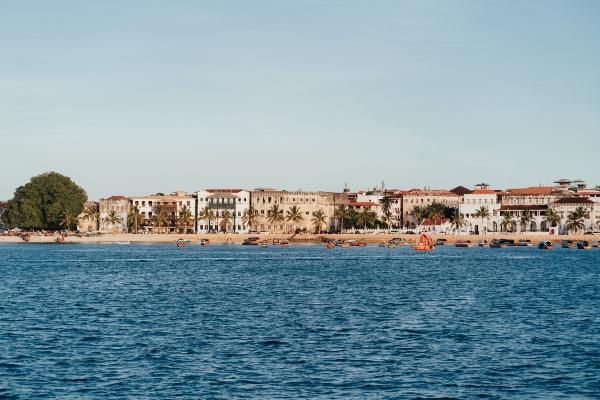
Zanzibar’s East Coast
The East Coast of Zanzibar has a superb succession of long, wind-swept and palm-fringed beaches. The further south you go, the beaches seem progressively more wild and more naturally flotsam strewn than their northern neighbours. Although many of the hotels make an effort to sweep their areas of the beach, these regions are prone to fluctuations of seaweed in the early months of the year. Nevertheless, the sand is remarkably fine and clean, with knee-high drifts to relax into under the palms, and these shining pale beaches seem to stretch on and on and on.
The East Coast is naturally divided into north and southern regions by the formation of the coastline, which is also followed by the roads. Turnings lead from the central main road to the northern reaches of Matemwe (Pwani Mchangani), Kiwengwa and Chwaka, and a separate route leads to the southern beaches of Paje, Bwejuu and Jambiani.
There is a wide choice of accommodation along this coastline to suit all budgets, although this coastline is highly favoured by the Italian ‘Club’ hotels, many of which cater exclusively to Italian package tours. These tend to be very insular, and their guests generally do not stray far from their in-house facilities. A few welcome direct international bookings and these are listed among other accommodation recommendations below.
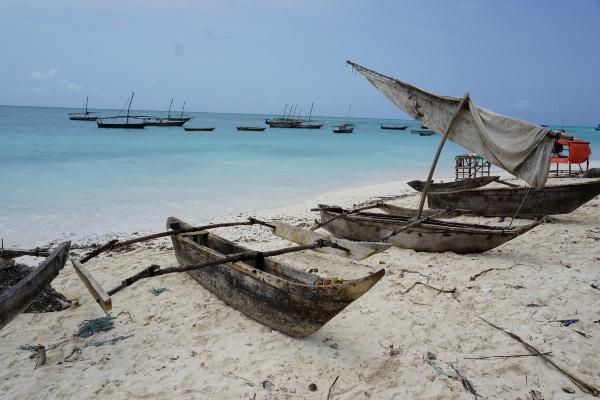
Zanzibar’s East Coast, Chwaka
Chwaka Bay is a lesser-visited region for tourism, despite being the spot chosen by the colonial government for its beachside repose. A few old double-storey, balcony and veranda-clad structures from this era stand in dilapidating evidence today, long since taken over by the Zanzibari government as ‘rest houses’ for ministers to entertain guests and then allowed to fall into sorry disrepair. The sandy roads and pathways at this rural junction between north and south are rarely travelled, and the ocean here is millpond smooth, as it is protected by the pale sandy peninsula that extends across the bay.
It is in this atmosphere of strange quiet and reserve that the Chwaka Bay Hotel, PO Box 1480, Tel: 2233085/ 2233005, Fax: 2233777, stands among the palm trees; a collection of 10 round white-washed bungalows set back in tropical gardens around a central makuti restaurant and bar. The hotel is run by a combination of Swedish Zanzibari and Zanzibari management and is popular with a mixed European clientele – especially groups.
The rooms are comfortable, clean and well-appointed with private bathrooms, hot running water and fans, and all areas are pervaded by an idiosyncratic atmosphere of Swahili decorative flair. The walls of the restaurant and central reception are brightly muralled with maps of Zanzibar island, and adorned with the faces of presidents past and present hung in shabby frames. The restaurant claims to provide delicious seafood in local and international styles, and is pleasantly open-sided, although sea views are limited.
The hotel is oddly arranged behind the main road that divides it from the beach, and staff are possibly rather more keen on the days when clients are absent than those filled with the effort of working, but this is a very quiet and private location providing decent accommodation for the price of $40 per double, (on a b&b basis), with just $10 per person for an extra room. Meals are $15 for half board or $30 for full board.
The northern peninsula of Zanzibar is truly stunning, and for anyone with a passion for beaches, it has all the elements of paradise. It is hard to imagine any traveller arriving on a fine day without a gasp of admiration for the startling translucent waters washing over fine coral sands and wide views across the Indian Ocean.
Here, on the northernmost tip of Zanzibar Island, the air feels fresh from its wide sea crossing and so susceptible to the slightest nuance and reflection as the sun rises and sets. The sand shores up against the land in unfeasibly fine, sinkable pale drifts, and the beach makes its changing way around the headland, depending on the tide.
When the tide is out the way is opened to walk the long distances exposed and bathe in shallow pools left warming in the sand. Crabs scuttle among the odd flotsam of shells and shapely coral, and colourful women sing and chatter together as they gather around their wide fishing nets, fully clothed and knee-deep in pale turquoise waters to survey their days catch. Tin pots worn on their heads – for convenience- catch and reflect the gleam of the sun, and their songs rise and fall on the wind.
These beaches are the life force of the nearby local villages, and children scour the shoreline daily gathering shellfish for suppers while women fish in the shallows.
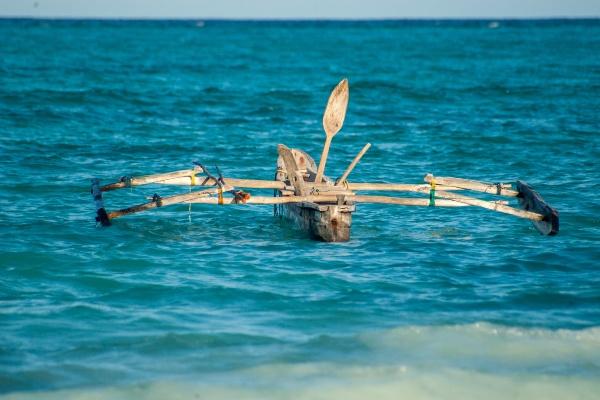
Zanzibar’s North Coast
This region was once the domain of the WaTumbatu, ruled by the Mwana Queen of the northern reaches of Zanzibar. There are several historic ruins at Fukuchani and Mveleni, on the road to Nungwi, which are outwardly thought to be a 16th-century legacy of the Portuguese but are likely to have the much older remains of an older Shirazi settlement beneath. There is little imaginative background to the naming of Ras Nungwi, as Ras means headland and Nungwi is Swahili for north, but the whole headland is made up of several coves and beaches around the rambling sprawl of Ras Nungwi village.
The land here is essentially coral rock, affording few possibilities for farming, and life on the peninsula can be tough, despite its natural beauty. The people of Nungwi have developed an impressive reputation as a rural population with a head for politics. Unfortunately, their general affiliation with the opposition party is said to have resulted in a reluctance for the ruling party to provide them with basic amenities such as water, (a scarce commodity on this island), electricity and roads. But as a result, many areas remain largely undeveloped, despite a sudden growth of tourist development in certain areas.
The finest, most upmarket accommodation in this area, Ras Nungwi Beach Hotel is situated on a wild and unspoilt stretch of beach to the North East of the peninsula, with acres of low bush extending to the far horizon in an easterly stretch. Between 30 to 40 minutes walk west around the headland leads past Nungwi lighthouse and brings you to the ever-increasing sprawl of budget lodges, a popular ‘backpacker village’ clustered around a good but generally crowded beach. A wide choice of restaurants, bars and dive centres attract an excitable crowd with a will to party, and the atmosphere here is certainly an attraction, especially after sundown.
What to Do on Zanzibar’s North Coast
Continuing westwards, a further 30-minute walk around the headland brings you to the lesser-visited haven of Kendwa Rocks, a speciality backwater for budget travellers seeking a less sociable haven of peace and natural calm, where clear beaches, pristine clean sea and a quiet life form the essence of the Zanzibar island idyll.
Nungwi is not only a naturally attractive beach location, but there are several local areas to explore at leisure and it is popular for diving, snorkelling and fishing around the close offshore reefs.
The villages here are primarily fishing villages, and to the northwest of the peninsula is one of the main centres for Zanzibar’s traditional dhow-building industry. On a beach just beyond the village the boat builders still occasionally create the ‘sewn boats’ that so perplexed Marco Polo, weaving wide planks together with rope made from coconut husks. The elegant crafts that they construct are wrought from natural materials close at hand, especially the hardwood timbers of the trees that grow nearby.
Further east, at the point at which the road diverges to each side of the peninsula, the old Mnarani Turtle Sanctuary is a pretty natural rock pool formed in a coral inlet which has been made into a protected aquarium, watched and tended by local people. This has recently been enclosed within the grounds of the Baraka Beach Bungalow Annex, but the management claim to be amenable to allowing visitors in. The colourful pool within forms a sanctuary for small and shiny-shelled green and hawksbill turtles whose livelihood is severely under threat, because local sea turtles have traditionally been regarded as a food source, and their shells sold for ornaments.
Because the locals here make some money from donations, there is a chance that awareness of the need for their preservation will spread. Zanzibari turtles are now desperately endangered, and further threatened by on-shore developments that confuse their sense of time with lights which look to them like a full moon, so they are lured onto the beach to lay their eggs at completely different times of the month. But there are signs of giant sea turtles on the Nungwi beaches, leaving a trail as wide as a caterpillar tractor in the sand as they leave the sea in the early dawn to lay and bury their eggs on the beach. Tourists can play a part in the attempt to preserve the species around these islands by taking vigilant care not to buy goods made with tortoiseshell.
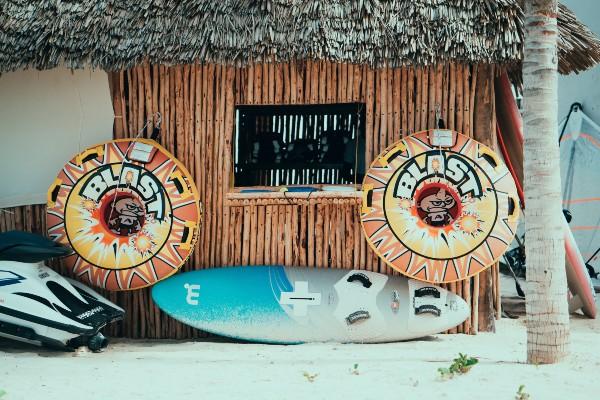
Diving Nungwi on Zanzibar’s North Coast
For those who would like a chance to see the turtles swim in wider waters, along with the possibility of a glimpse of a dolphin and a mass of reef fish, there are PADI certificate dive centres at Nungwi on either side of the peninsula. The dive centre at Ras Nungwi Beach Hotel is well-equipped to train beginners and runs regular PADI courses, which should be booked in advance.
Diving is notably good around coral reefs off the northeast of the island and skirting the Mnemba Atoll, and there are plenty of options for beginners and experienced divers alike.
Resident pods of dolphins here are frequently seen on dives or on the way to or from the dive sites and are fun to swim with if they are in the mood to do so.
There is plenty to excite experienced divers if they dream of wall dives, night dives and drift dives, (again, advise the dive centre in advance), or wish to explore deeper waters where lush coral gardens can extend as far as the eye can see. In the deeper channels barracuda, kingfish, tuna and wahoo hunt together with large Napoleonic wrasse, graceful manta rays and sharks, whereas the in the shallows a huge variety of Indo-Pacific coral gardens are the playground of colourful tropical fish.
Beaches on Zanzibar’s North Coast
The tidal extremes of the beaches all around Zanzibar Island make for stunningly scenic walks around the headland at low tide, and those at Nungwi are especially beautiful, being mainly wide expanses of sand dotted with numerous translucent pools. At this time it takes just 30 minutes to walk from the backpacker lodges to the Eastern beaches, or otherwise around Kendwa rocks, (about 3km southwest of Nungwi village), where there is usually still a beach at high tide and some fine reefs to snorkel. The unspoilt natural delights of Kendwa Rocks can also be reached on the daily boat taxi from Amaan Beach Bungalows and by road.
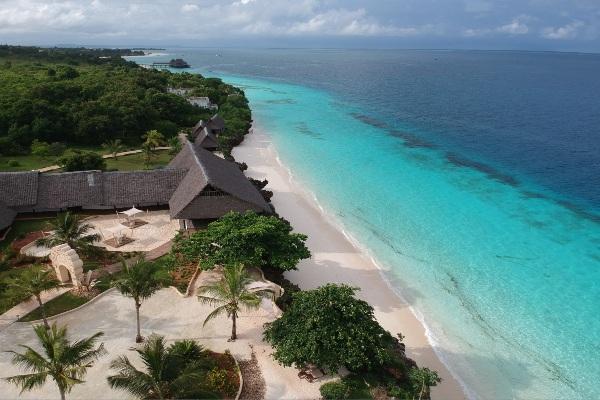
Zanzibar’s South East Coast
This area of coastline remained the most undeveloped until recently, and some areas still retain a wild sensation, which increases the further south you go. The main road leads to Paje village, about halfway along this stretch of coast, and then turns north to newly built, larger, smarter hotels such as Breezes, the Italian Venta Club Resort, Sultan’s Palace and Karafuu, and south to small, rural villages and clusters of charismatic budget guest houses arrayed along the distant beaches here.
The route to the South East Coast from Stone Town passes through a long avenue of mango trees, now wonderfully mature and providing shady respite along the road, which at this point is straight and narrow, designed for carriages in the days of the Sultans.
This avenue of trees was planted by one of Sultan Said’s most beautiful daughters, Princess BiKhole, and has developed many rumours about its conception. One tells how she had such an unquenchable desire for beautiful young men that she ensured that each tree was planted by a different desirable slave… It is said that she intended to extend the avenue the full distance to Stone Town, but either ran out of time, mangoes or men. What is true is that no two mango trees standing side by side are the same species, so creating a fantastic spread of colour and fruit through most months of the year.
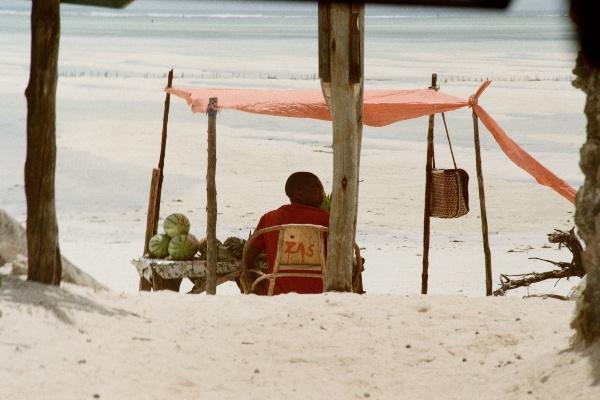
Zanzibar’s South East Coast History
Further along, are the ruins of Dunga Palace, the old home of the Swahili Great Lord, the ‘Gazetted Monument of the Mwinyi Mkuu’. It remains in good enough condition to be an evocative and worthwhile stopping point; walking among his ancient stone thrones and water features is enough to convince visitors that he enjoyed an impressively opulent dotage.
The Mwinyi Mkuu system of rule started in Zanzibar in the 13th century and continued unhindered until the coming of the Omani Arabs. A shadow of doubt remains over the questions of their origins, although it is thought that the first Mwinyi Mkuu was Hassan Bin Abubakar, who was then followed by successors. The most powerful and famous of these great lords was Ahmed bin Mohammed, who lived between the years 1785 and 1865, and it was he who was responsible for building this great palace.
Construction of the palace took ten years, mainly between the years of 1845 and 1856. It is said of the Mwinyi Mkuu that ‘his rule was felt in every part of Unguja’, although some areas of the island, such as Tumbatu, had their own subordinate rule. The domain of the Mwinyi Mkuu was distinctly compromised by the advent of the Omani Sultans, and by the reign of Sultan Barghash, the traditional Great Lord of Zanzibar stature was reduced essentially to that of a village governor, although in his hey-day he was greatly respected and revered. Relics of these greater days remain in the ruins of this palace, and an impressively hand-painted porcelain bowl that may be of the oriental origin is among the few items from this time gathered in the national museum.

